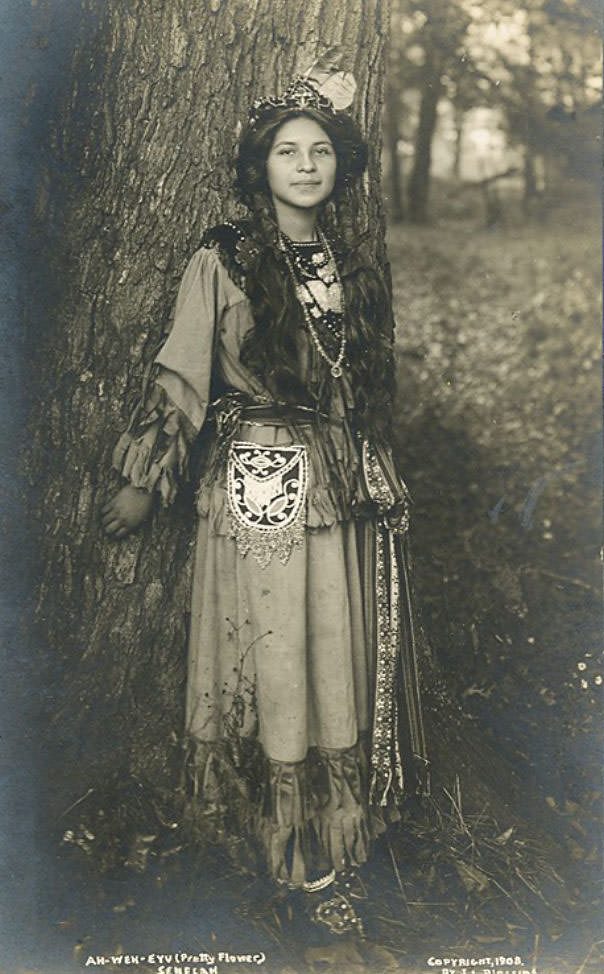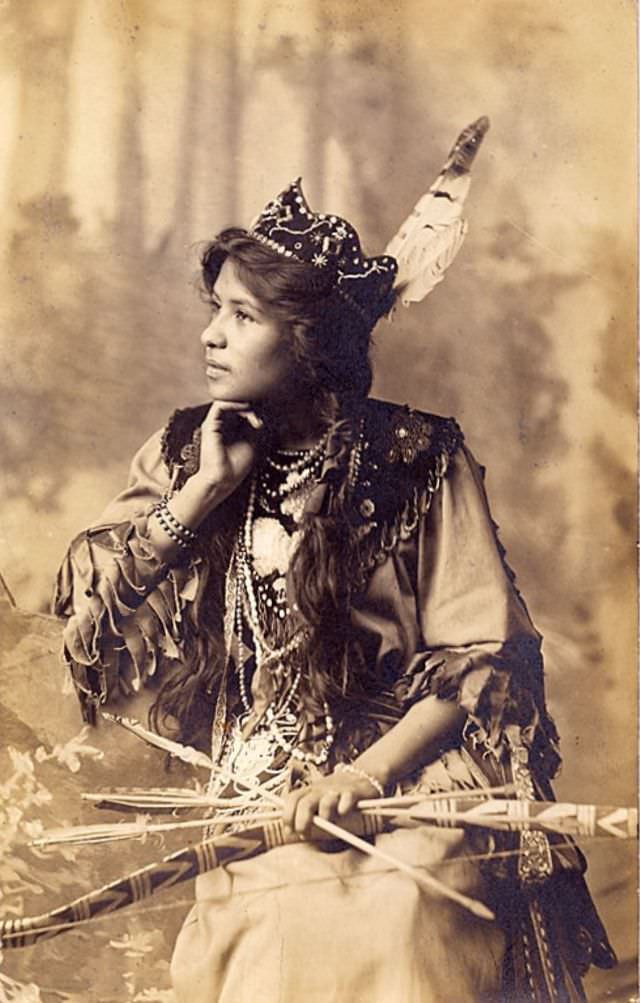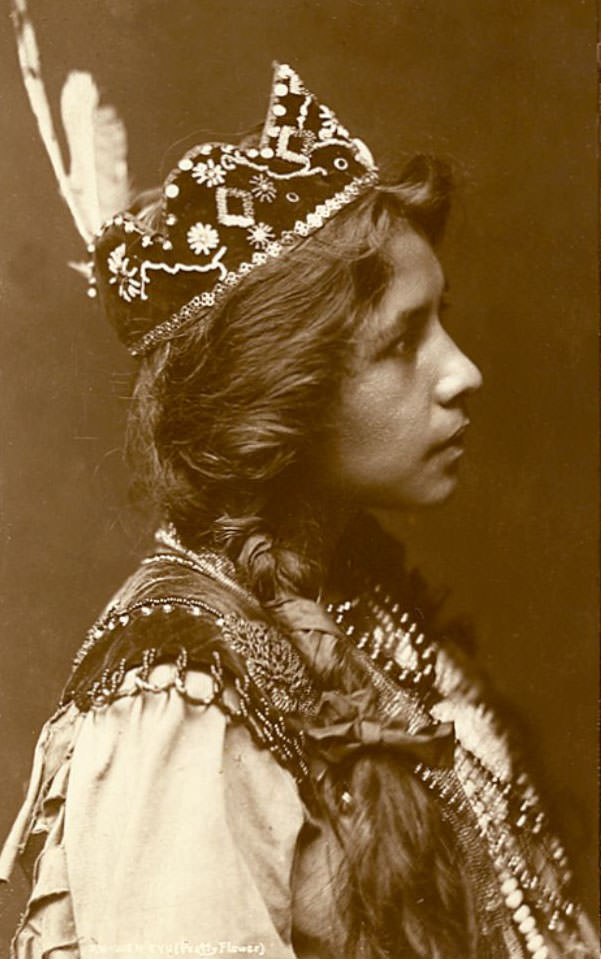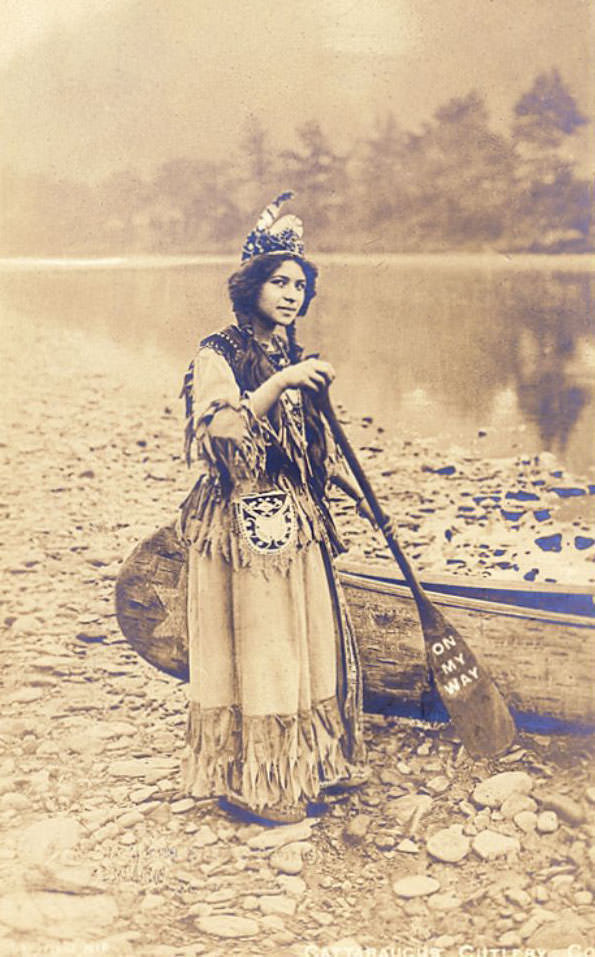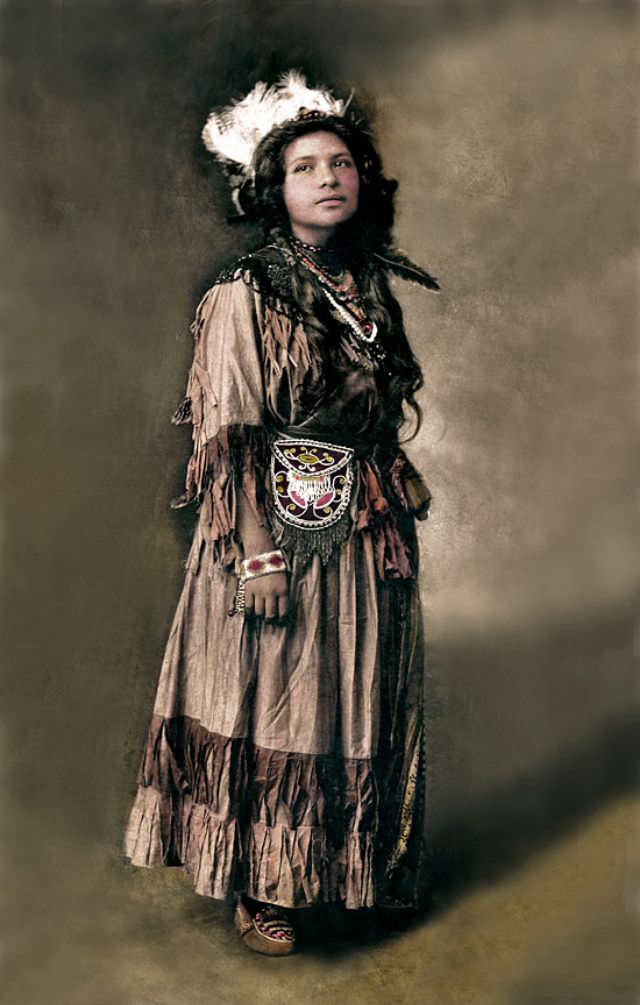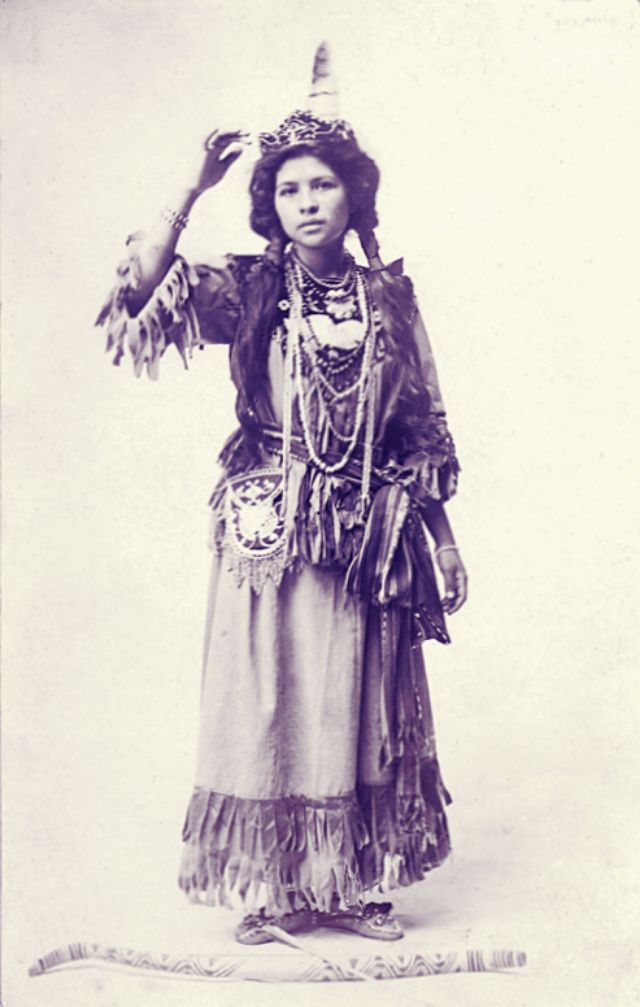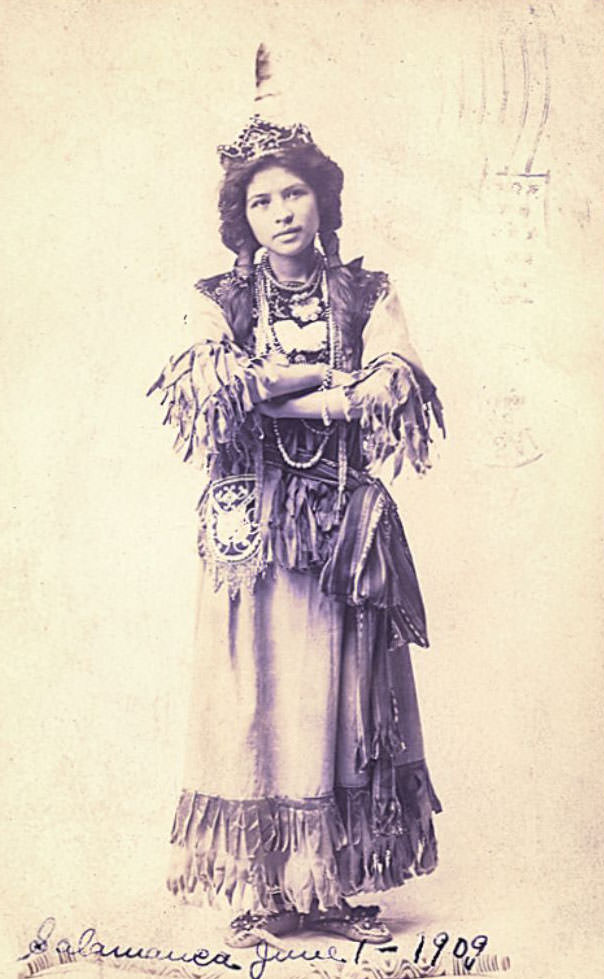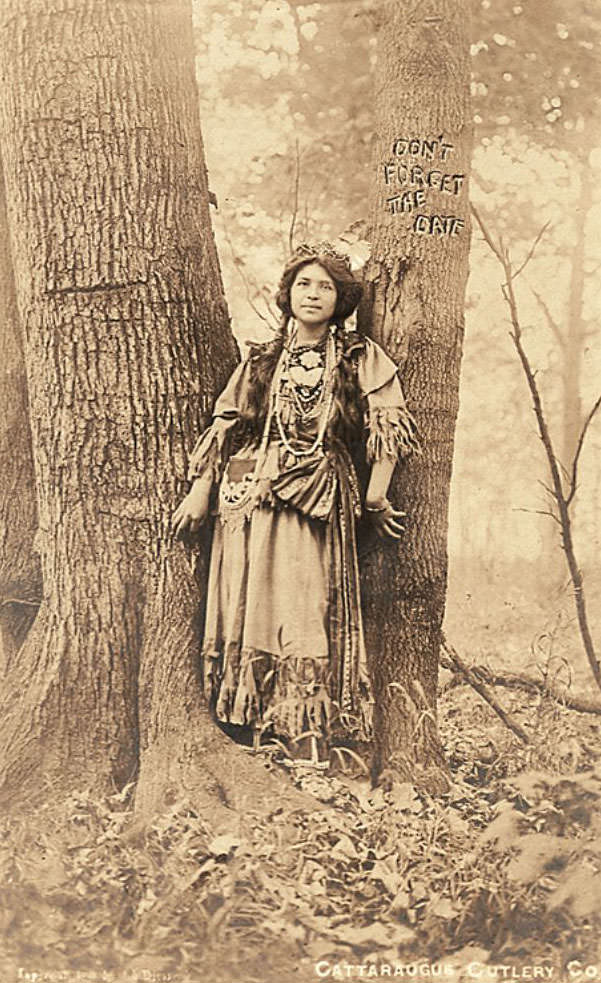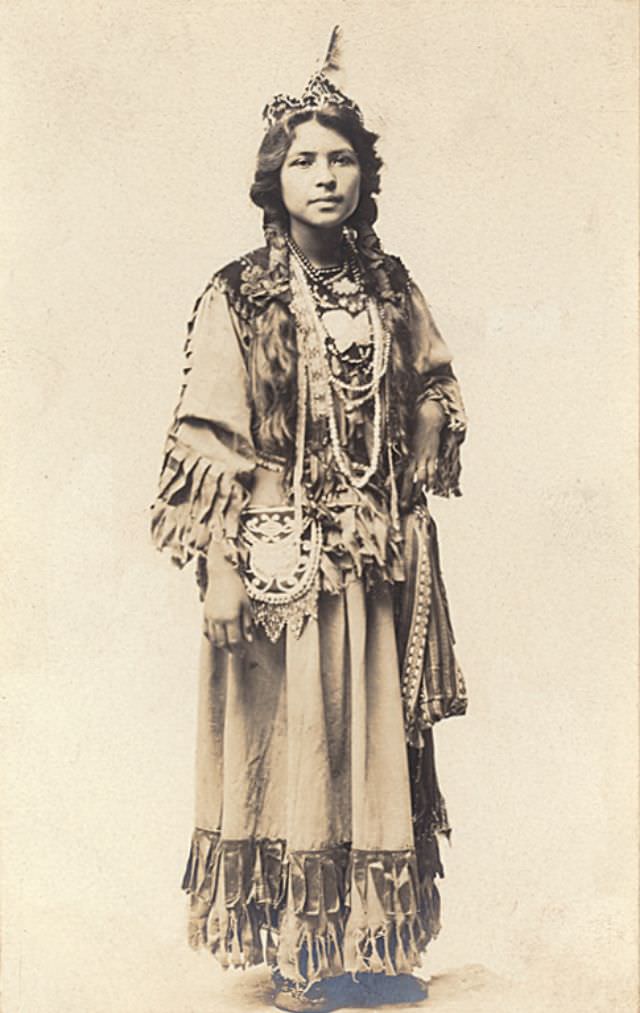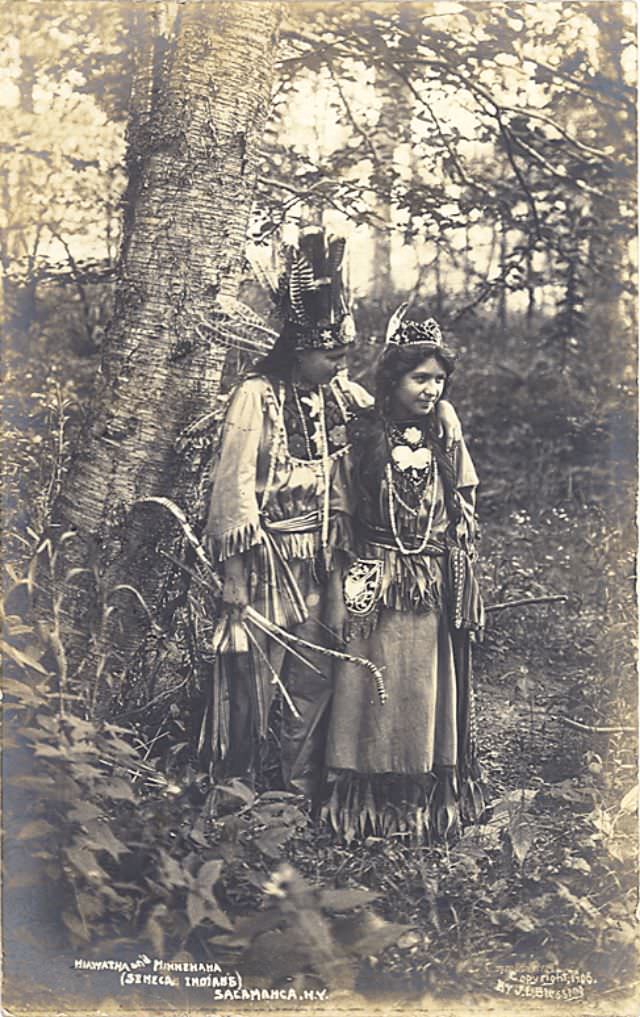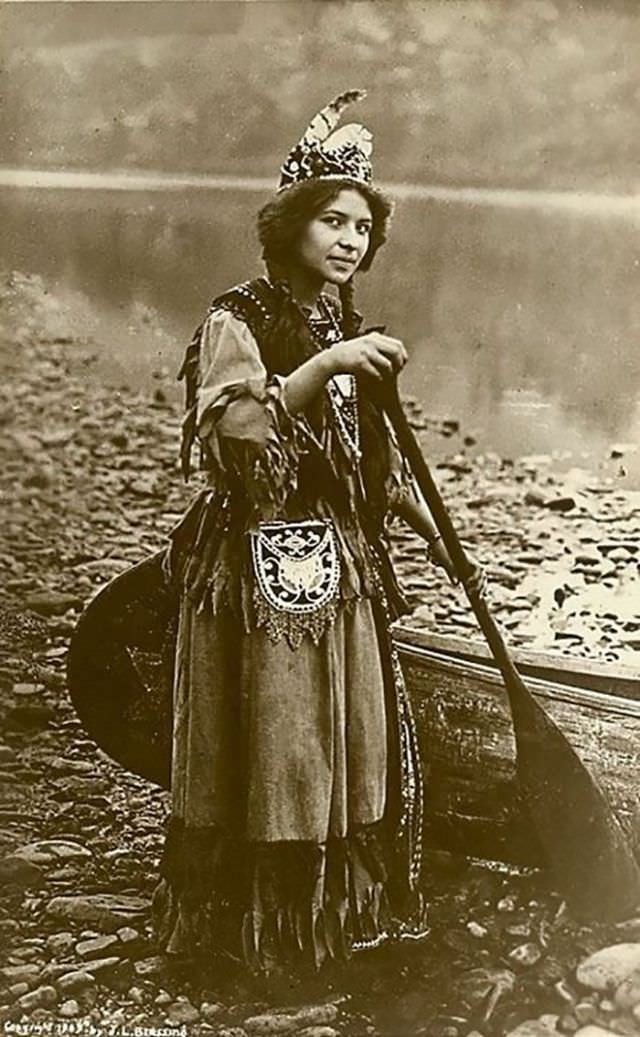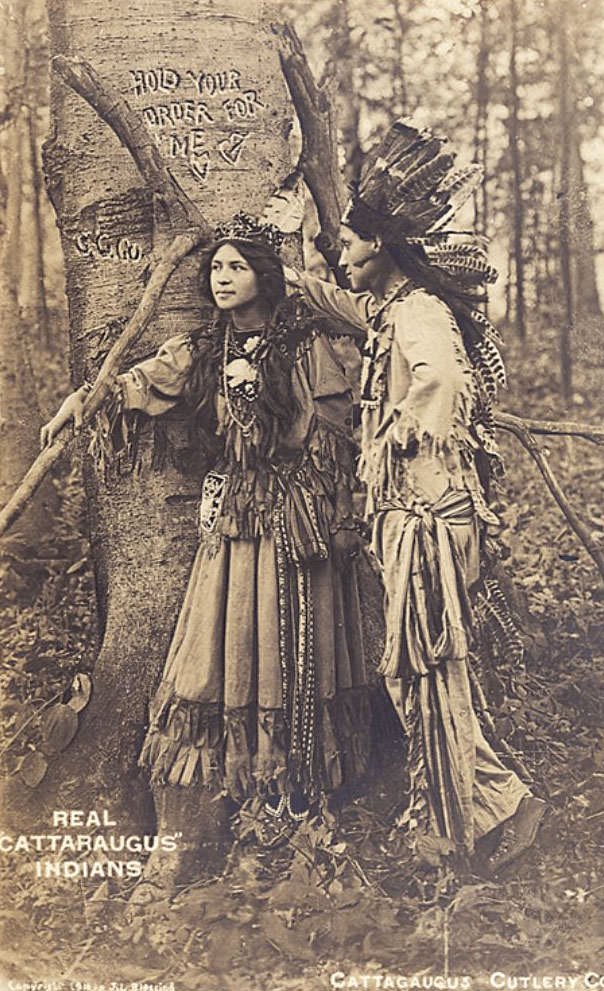Goldie Jimerson Conklin (born Ah-Weh-Eyu) was a Seneca woman of the Heron Clan who lived on the Allegany Reservation in southwestern New York. Born in Salamanca, New York, in 1892, Goldie was known by her Seneca name, Ah-Weh-Eyu, which means Pretty Flower. She was a prominent figure in Native American advertising during the early 20th century. She was hired by the Cattaraugus Cutlery Company of Little Valley, New York, as a model for postcard advertisements.
The Cattaraugus Cutlery Company was looking to sell its business line of “Indian Brand” knives and other household wares. Using Native American models in advertising was common during this time, as it fed into the famous American cultural stereotypes of the “Noble Savage” and the “Indian Princess.” Even though these stereotypes had no basis in reality, they were perpetuated by novels and films, and many companies capitalized on the fascination with Native Americans to sell their products.
Goldie was one of the many Native American models who found work in this industry, but she stood out for her beauty, grace, and poise. Her images were used in postcards and other print advertisements, and she quickly became a popular symbol of Native American culture.
Goldie’s work as a model was significant because it helped to challenge some of the stereotypes about Native Americans that were prevalent in American culture at the time, by presenting Native American women as beautiful and sophisticated, Goldie and other models like her helped to humanize and normalize Native American culture in the eyes of mainstream society.
Despite the success of her modeling career, Goldie faced many challenges in her personal life. She lived through a time of great upheaval and change for Native Americans, including the forced removal from their lands, the boarding school era, and the Indian Citizenship Act of 1924. These events had a profound impact on Goldie and her community, and they left a lasting mark on her life.
Goldie Jimerson Conklin passed away in 1974, but her legacy as a pioneering Native American model lives on. Her work helped to challenge stereotypes and present a more accurate and complex picture of Native American culture to the world. Today, she is remembered as a trailblazer who paved the way for future generations of Native American models and artists.
These captivating photographs were captured around 1910 and feature Goldie Jimerson Conklin. In most images, she can be seen wearing a beautiful beaded bag, which was likely her own creation. Goldie’s parents were Jacob J. Jamison and Eliza D. Jamison, and she was baptized at St. Andrews Church in Irving, New York, on July 7, 1921. These photographs provide a glimpse into Goldie’s life and offer a window into the vibrant culture of the Seneca people. Her legacy as a trailblazing Native American model and artist continues to inspire and captivate people around the world today.


